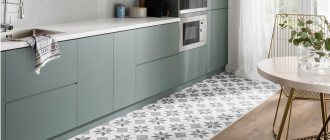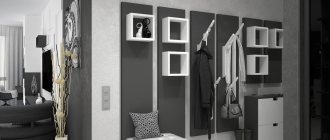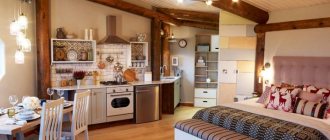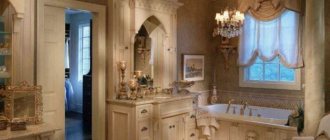Exotic decor, warm colors and wooden furniture are the main features of the colonial style.
This method of interior design was created through the meeting of two cultures and the combination of elements that would seem to not fit together. We will tell you how to bring colonial style to your home and apartment. Find out what colors, furniture and accessories to choose to enjoy a design that successfully combines classics with the East.
What will you read about in the article?
- Colonial style - what is its history?
- Colonial style - learn about its most important features
- Colonial style furniture - what to choose?
- Colonial style - what accessories will highlight it?
- How to decorate a living room in a colonial style?
- Colonial bedroom - how to arrange it?
Colonial style - what is its history?
The colonial style began when British conquests began in Asia and Africa. At that time, British families moved with all their wealth to remote areas. Aristocrats of that time even brought furniture from Europe. However, the unfavorable climate meant that elements of the technology were quickly destroyed. Therefore, local craftsmen began commissioning replicas of this furniture, which used durable and moisture-resistant woods such as wenge, merbau, rosewood and mahogany.
The colonial style arose due to the fact that elements characteristic of African and Asian cultures began to penetrate into the interior, decorated according to the British model. This resulted in a combination of classic and elegant pieces with exotic colorful accessories. Nowadays, the colonial style allows you to create a space that promotes relaxation, associated with travel, with seemingly muted colors, but at the same time with amazing ethnic accessories.
How did the colonial style originate?
- The colonial style originated during the British conquests in Asia and Africa.
- British families moved to remote locations with their belongings, including furniture,
- Equipment elements have failed due to unfavorable climate,
- As a result, furniture from local craftsmen who used exotic woods such as wenge increasingly appeared in the homes of British families.
Currently, the colonial style allows you to create a space that is conducive to relaxation associated with travel.
Briefly about the main thing
The colonial style has long been entrenched among other classical styles and has not lost its charm and relevance. This interior style is very individual and reflects the great era of conquest. Each colonist, upon returning to his homeland, one way or another, brought into his home the life of the place he visited. Therefore, two different styles of premises inevitably collided, transforming into a new and unusual direction. Thanks to this combination, a unique style emerged, the beauty of which does not leave people indifferent to this day.
Colonial style - learn about its most important features
Colonial style is characterized by the use of warm earth tones, green, brown and beige. There are also blue or red accents. Colonial style, of course, does not abandon the irreplaceable white color.
Colonial interiors are distinguished by a variety of patterns. African ornamental motifs can appear on massive furniture. Colonial-style interiors are also often decorated with floral motifs, which can be seen, for example, on wallpaper or curtains.
If you are planning to decorate a colonial home, be sure to use natural materials. Exotic wood such as mahogany, teak or merbau is typical for this type of space arrangement. Furniture and decorative ceiling beams should be made of natural material. Colonial interiors are often decorated with stone. The decor also uses linen, fine cotton and tulle, which add lightness to a room with massive furniture.
Features of the colonial style:
- It features muted earth tones that are visible on large surfaces.
- Compositions include beige, green, brown, as well as white,
- The role of color accents is played by red and blue,
- Not only colors are important, but also patterns, such as a floral motif,
- Colonial design uses natural materials such as stone and wood.
- The compositions use linen, thin cotton and tulle.
Linen, fine cotton and tulle are used in the interior.
Decor and accessories
The decor determines the character of the colonial interior, giving it exoticism and a special “native” flavor. Classic paintings, mirrors in expensive frames, carpets, skins, hunting trophies on the walls are successfully combined with objects of native culture - masks, figurines, weapons, musical instruments. An academic chandelier will be perfectly complemented by lamps with lampshades made of brass, bronze, glass, rice paper, etc. - this will create an ambience and fill the space with light.
An old map or globe, books, and navigational instruments look good in such a neighborhood. But the main decorations of the interior are exotic plants with large leaves: palm trees, dracaenas, ferns, tropical flowers will create the complete illusion of the tropics!
Colonial style furniture - what to choose?
Colonial style can be brought into any room, but it works best in spacious homes. Small interiors can be a little overwhelming. If you choose this interior design option, you will need wooden, heavy, massive furniture. You can emphasize the colonial style with furniture in a deep brown shade, as well as softer furniture with richly decorated facades.
Colonial style furniture can also be made from rattan. It looks lighter than wooden models, so choose this solution if you have limited space. Of course, dark wooden furniture with a heavy body can also be integrated into a small colonial style interior. However, you will need a few tricks to brighten the space, for example, enriching the composition with light, bright materials.
When choosing colonial-style furniture for your living room, consider seats with classic, elegant shapes. Look for models with light upholstery. You can enrich the composition with a chair, the upholstery fabric of which will differ in ethno-pattern. The same pattern should be repeated in other places, for example, on curtains or pillows.
What furniture to choose for colonial decoration?
- Which is made of exotic wood,
- Characterized by massiveness,
- Models with richly decorated facades,
- Rattan furniture is also suitable, which will be a good solution, especially for small interiors,
- In the case of seats, their classic, elegant shape and bright upholstery are important.
- However, one chair can stand out from the rest of the furniture, for example, with an ethnic ornament.
You can emphasize the colonial style with furniture with richly decorated facades.
Walls and ceilings
The design uses natural materials: stone, wood, copper, clay and brick.
If you don't want to bother with wallpapering, you can paint the walls a light shade. Beige or cream are best - they will give a feeling of air and visually enlarge the room.
Do you prefer wallpaper? Choose them. Solid colors or products with small bamboo patterns will look great.
Advice! Do you want something brighter? Then look for wallpaper with an exotic pattern. A prerequisite is natural colors. Otherwise, the walls will stand out from the overall plan.
You can leave the ceilings smooth and light, or you can decorate them with fabric or leather. This will give the interior more pretentiousness and grace.
The floor should be darker than the walls and ceiling, but also preferably monochromatic. This surface design serves as an ideal backdrop for furniture and decor.
Colonial style - what accessories will highlight it?
A colonial house must be full of tourist souvenirs. Try collecting bling from exotic locales and you'll see how any room begins to take on character. If you don't have time to redecorate the interior, you can also do it and highlight the colonial style. You can purchase accessories from a craftsman whose products have given you special pleasure. Figures of people and animals, as well as masks, are perfect as decorations.
Colonial-style interiors can be complemented with ceramic vases, which are distinguished by rich colors or interesting patterns. Wooden accessories, such as photo frames, are also suitable. You can emphasize the colonial style thanks to wicker elements.
Head to a flea market to find unique items. Check out online auctions too. You may find not only an oriental accessory, but also a richly decorated, massive piece of furniture that will allow you to enjoy the colonial style of the interior. In stores and on vacation, pay attention to braids, mats, boxes, copper bowls and original candlesticks.
Colonial style - accessories that will highlight it:
- Souvenirs from exotic places,
- Original products from masters,
- Animal and human figurines and masks,
- Ceramic vases and copper bowls,
- Wooden photo frames and candlesticks,
- Basketry.
The colonial interior must be full of tourist souvenirs.
Furniture
The approach to furniture was twofold. They preferred to weave chairs and armchairs from bamboo, rattan, wicker, palm fibers and other lightweight materials: this made them easy to take out into the garden or gather company in the office. The abundance of pillows allowed anyone to get comfortable. But wardrobes, beds and other fixed furnishings were made monumental, made of solid wood covered with skillful carvings. The facades were decorated with the same carvings or wicker inserts. Forging with many details was also held in high esteem. Durability and practicality triumphed over momentary fashion, but were no less beautiful for this.
So for authenticity, furniture will have to be made to order or bought in expensive stores. Flea markets will not help here: the environment must be in impeccable condition.
How to decorate a living room in a colonial style?
For a living room in a colonial style, the basic arrangement is necessary - flooring and material for finishing the walls. You can arrange dark wooden planks on the floor, but if the room is small, light planks, such as those arranged in squares or triple diagonal spruce, will work.
On the wall you can use beige paint, as well as wallpaper with delicate patterns. Beams on the ceiling are also perfect - thanks to them you will emphasize the colonial style. The living room also needs accessories to complete the decor. Plants, especially those with large green leaves, as well as framed figurines or cards work well in this role. Spectacular lamps - both floor models and sconces - would also be appropriate.
Choose a soft sofa upholstered in white fabric. Next to the sofa you can place a butterfly chair, the base of which is metal and the seat is made of ecological leather. Next to the seating area, place a massive dark brown coffee table that will highlight the colonial style. It is also worth equipping the living room with a display case or chest of drawers - each of these pieces of furniture will be used not only for storage, but also for displaying tourist souvenirs.
Colonial style living room - how to decorate it?
- For the floor, use dark wood, and if the room is small, use light slats,
- Paint the wall with beige paint, and decorate part of the room with wallpaper with subtle patterns,
- Use beams on the ceiling,
- Keep in mind the additions of potted plants, lights, framed cards and figurines.
- Choose a soft sofa with bright fabric upholstery,
- The composition can be complemented by a butterfly chair made of ecological leather,
- Place a massive dark brown coffee table in front of the seats,
- Choose a chest of drawers or display cabinets that are ideal for storing items as well as displaying souvenirs.
Choose a chest of drawers or display cabinets that are ideal for storing items as well as displaying souvenirs.
The main directions of style and their distinctive features
Colonial style is an expensive pleasure that only people with above-average income can afford.
The interiors use exclusively natural materials, which are now very expensive. General features of the direction include:
- Abundance of exotic vegetation. Colonization usually took place in tropical countries, which explains the use of “local” vines, ferns, and palm trees. Plants not only looked beautiful in homes, but also helped cool the hot air slightly.
- Wide floor-to-ceiling windows look more like doors. In colonial houses, openings were purposefully enlarged. To a large extent, this was done so that a pleasant draft appeared in the house.
- Use of natural wood and stone in exterior and interior decoration.
Although there are many substyles in the colonial direction, in our time only three of them have gained popularity:
- French;
- English;
- American.
The latter deserves special attention, since it is considered colonial “squared”, because before becoming a metropolis, the country itself was under the yoke of Britain for a long time. The direction is based on the classical style, which has expanded its boundaries.
This was expressed in spacious (necessarily 2-3 storey) houses, where guests were greeted by a huge hall with a staircase.
Solid wood prevailed in the materials, and the decor was made of forged metal. The English version of the style is an architectural and interior medley of Great Britain and India, which was its colony for a long time. The severity, stiffness and aristocracy of the British collided with the softness, openness and simplicity of the Indians.
Classic interiors are complemented by “wild” trophies in the form of animal skins and heads on the walls, and Gothic features alternate with smooth, rounded lines and ornate patterns that used to decorate Hindu temples.
The French colonial style gave us the famous panoramic windows.
In this direction, the clearest trace was left by mixing with Asian cultures. The interiors use silk wallpaper with thematic patterns, expensive porcelain, and metal decorative elements (boxes, vases).
Colonial bedroom - how to arrange it?
Start by choosing materials that will serve as the background for your composition. Wood is best for flooring, and you can also take advantage of its visual benefits by choosing decorative ceiling beams. A colonial bedroom will become more comfortable if you cover one of the walls with wallpaper. Finishing with small flowers is ideal.
A colonial style bedroom needs proper window coverings. Dense material will provide privacy, but will also become an additional decoration of the interior. Bamboo blinds work well in the bedroom. When choosing furniture, pay attention to canopy beds.
You will emphasize the colonial style with a massive chest of drawers in a dark wood tone. If you do not have an additional dressing room, place a spacious closet with richly decorated facades in the bedroom. Be sure to choose a model with a swing door, because a sliding door looks too modern.
Colonial bedroom - how to arrange it?
- Use wood on the floor
- Decorate the ceiling with wooden beams,
- Paste wallpaper with small flowers on one of the walls,
- Hang bamboo blinds on the windows, which will decorate the space, but above all, provide privacy,
- Choose a four-poster bed,
- Choose a dark wood chest of drawers or a cabinet with ornate fronts.
Interior of different rooms
When creating an interior in this style, it is not necessary to adhere to strict boundaries; you can show your imagination and develop a unique design. However, the design of different rooms has its own nuances and subtleties that must be taken into account.
Bedroom
The main difference between the bedroom is the four-poster bed. In the old days, a canopy served as protection from insects, but now it is simply a beautiful, unusual decorative element. The bed itself should be massive with carved or forged elements.
The floor is made of wood and covered with carpet on top.
The ceiling can be covered with wooden paneling. Sometimes small neat beams are added to this finish. In such a bedroom a carved chest of drawers with many drawers, an elegant dressing table and wicker chairs would look good. An antique chest or closed basket will enhance the impression.
Living room
The living room is the central place in the house. This is where the owners meet guests, communicate and spend most of their time. Therefore, it should be conducive to casual conversation and relaxation.
Rules for decorating the living room:
- The fireplace fits very organically into the interior of the living room.
- It is advisable to provide a seating area with upholstered furniture and a coffee table.
- You can hang mirrors in luxurious frames and paintings in richly decorated frames on the walls.
- In addition to the central chandelier, lamps with textile lampshades or beautiful candlesticks with candles will fit well into the design of the room.
- Various decorative elements will help to enliven the interior of the room: masks and sculptures, bronze vases, unique handmade items from different countries. They are distributed throughout the room, some of them can be placed on the mantelpiece.
Kitchen
The main piece of furniture in this room is a massive carved kitchen set. On its open shelves or behind glass doors there are exotic kitchen utensils - pottery, unusual jugs, vases and much more. In the center of the kitchen there is a table for preparing and eating food. A large stove or its imitation will help create a cozy atmosphere in the room.
Spanish-style cuisine is gaining increasing popularity today. The walls and ceilings of the Spanish kitchen are decorated in calm neutral colors. Furniture, doors and window frames, on the contrary, are chosen in dark colors.
The following would look ideal in such a kitchen:
- arched openings;
- fireplace;
- huge floor-to-ceiling windows;
- textile curtains on the windows;
- forged or wicker furniture;
- Spanish decorative elements.
Bathroom
The bathroom should be spacious and bright.
Characteristic features of this style in bathroom design:
- The walls and floors are decorated with mosaics, tiles or ceramic tiles.
- The furniture is made from wood species that are resistant to high humidity.
- When choosing plumbing fixtures, preference is given to antique porcelain sinks and bathtubs with graceful legs.
- The windows are closed with carved shutters made of expensive wood and light curtains with ethnic patterns.
You can decorate the interior with beautiful mirrors, unusual sconces on the walls and other small decorative elements suitable for the bathroom.
Studio apartment
A small studio apartment can be made functional and comfortable by decorating it in a colonial interior. To do this, the room needs to be divided into zones: kitchen, living room and bedroom. Fabric screens will help zone your apartment.
When setting up a studio, you need to comply with some conditions:
- The kitchen is separated from the living room by a bar counter. It can be used for cooking and as a dining table.
- A refrigerator is installed next to the bar counter against the wall, and a sink is located opposite.
- The material used to make living room furniture is often carved wood in light shades.
- The bedroom can be decorated with decorative accessories, unusual lamps, wild animal skins and tropical plants.
Colors and patterns
The colonial style combines rich colors. The easiest way is to combine a room with beige walls with mahogany furniture, and the effect will be wonderful. You can use an irresistible combination - against the background of dark walls, decorate an ivory sofa with wooden accessories.
For connoisseurs of rich colors, colors such as red, shades of orange, pink, yellow, orange, and shades of blue are perfect. However, you should not combine these colors in rooms with walls of equally saturated shades. They will look great with brown wooden furniture against light walls and floors. In turn, typical patterns for the colonial style are ethnic, geometric patterns, Indian and African motifs.
Lighting
One of the recognizable lighting elements of the colonial style is a round chandelier with candle bulbs. They are hung in any room, from the living room to the kitchen. It is not necessary to repeat the lamp exactly, but it is better that it is metal, forged and emits a warm light.
Lampshades for floor and table lamps are made of silk or linen, using both plain and exotic fabrics.
Who is this style best suited for?
Colonial style is ideal for those who feel comfortable in elegant (but not too) classic interiors and love natural materials with lots of exotic woods and accessories. Colonial aesthetics are best suited for a larger space where it will be easy to place the dominant interior, heavy furniture.
But you can also give a small apartment a colonial feel by decorating it with exotic accessories brought back from long-distance travel or found at flea markets.
Materials
Colonial luxury does not tolerate compromise: it is the style of very wealthy people. Solid natural wood of exotic species, high-quality ceramics, an abundance of bronze, brass, leather, expensive fabric wallpaper - any attempt to save money will turn the interior into kitsch. Natural parquet or tiles with ornaments, a well-plastered ceiling, wicker rattan, bamboo and reed will complement carpets made of animal skins, exquisite forging and fine porcelain. Alas, this beauty requires, if not sacrifice, then serious expenses.
Combination of colonial and modern styles
To meet the expectations of lovers of travel and a colonial atmosphere in interiors, designers create furniture and accessories that combine the basics of this style with designer chic. It’s great that even in this style we don’t have to lower our standards and requirements for apartment design. Exclusive designs created in colonial fashion will allow you to combine elegance with a touch of exoticism.
Remember that we don't need to be conservative in our selection, especially if you only want to bring a subtle, colonial touch to the interior. Place your bet on one very specific item.











